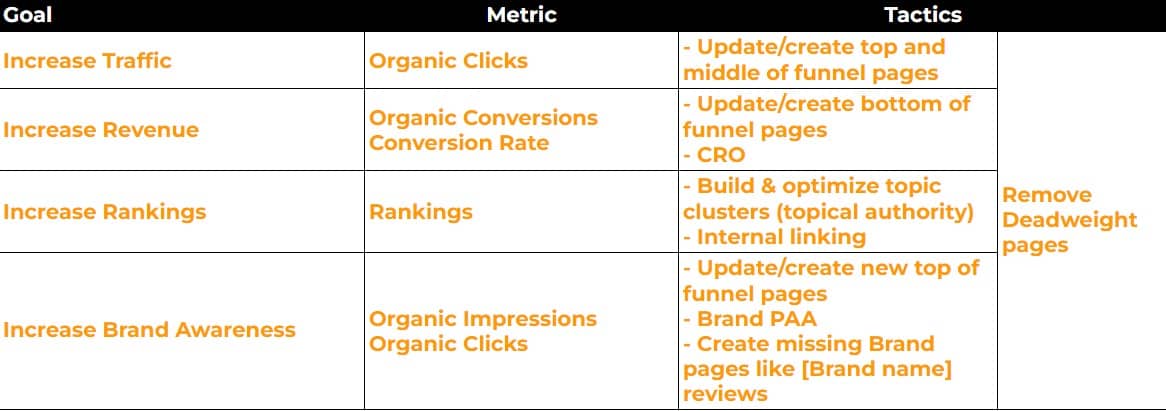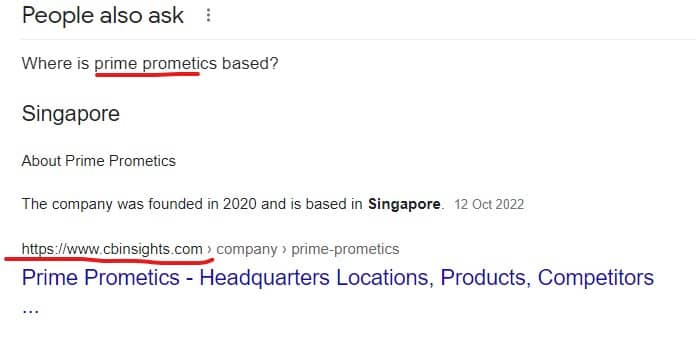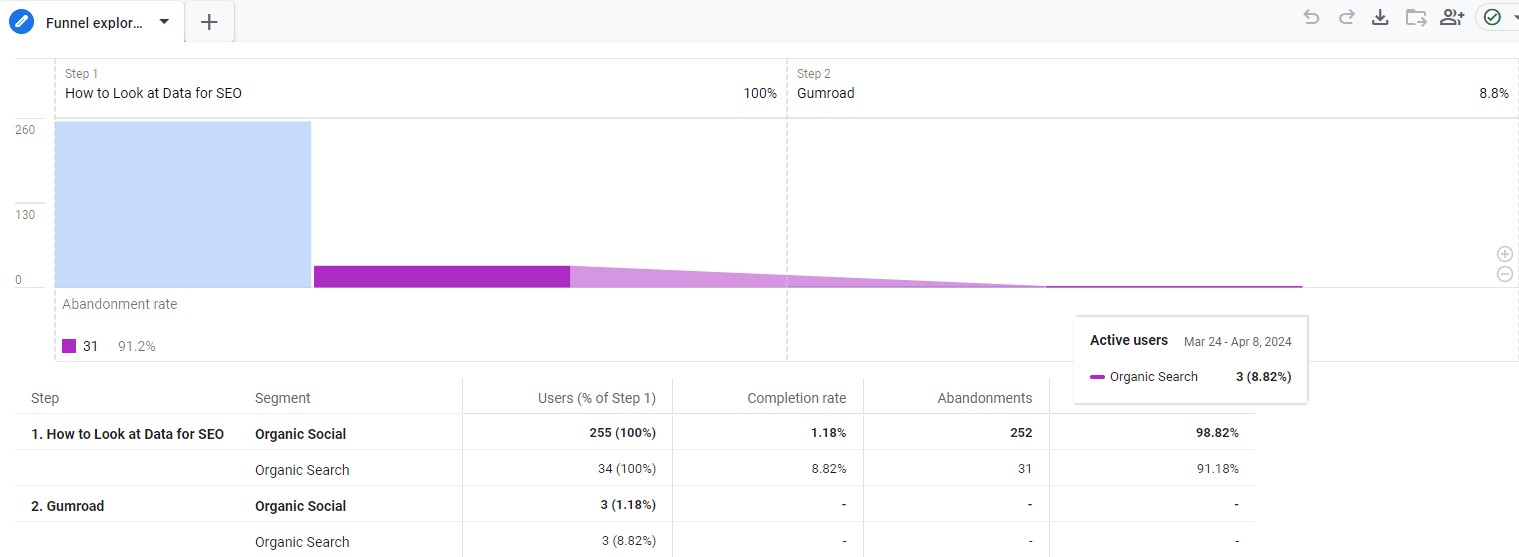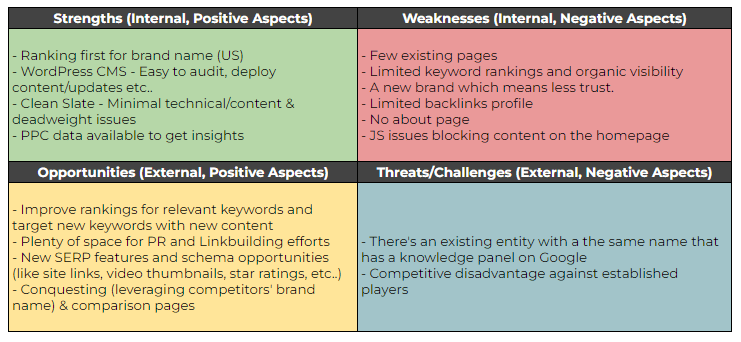SEO Content Strategy

I've talked about how and why you should do a content audit before and got plenty of feedback on that post. So today I'm going to take it a step further and show you how to create a content strategy that actually moves the needle!
TL;DR

What is a content strategy?
A content strategy is simply a high level plan, telling you what are the business goals we are trying to achieve and which pages you need to update/create (or remove) and to achieve those goals.
SEO content strategy by business goal
The first step you need to identify the business goals you are supposed to deliver. When you start working with a new client for the first time, they usually have one or more of the following business goals:
- Increase Traffic: all websites want to increase traffic, but an increase in traffic isn't necessarily valuable to the business in terms of revenue. So traffic for the sake of traffic isn't useful unless it actually matters to the business. A publisher/blog type of websites for example that make revenue from affiliate links and ads may need plenty of traffic and it makes sense to their business model. An increase in traffic goal can be something like "30% increase in traffic YOY". This is the case where you need to focus on high search volume keywords (top and middle of funnel content).
- Increase in Revenue: always talk money with your clients. One of the B2B businesses I worked with last year had very niche audience and therefore search volume for their money (bottom of funnel) keywords was very low. But a conversion on their website means 50K on average so while their conversion keywords would bring in very low traffic, ranking for them meant an increase in revenue. If you're money keywords have high search volume, it's good news, but if not, that's totally normal as well in B2B, as long its accompanied by a reasonably priced product or service. (low search volume for money keywords + low product price or average order value is not a good combo, I'd avoid that). If your main goal/focus is increase in revenue then go after bottom of funnel keywords. This is where you'll get the most impact.
- Increase in Rankings: I've seen this before, and even recently an ecommerce client wanted to rank on page 1 for a specific type of keywords. I took on this client because they are an SEO company themselves so they understand how SEO works, but I'd be careful with taking on clients that have "rankings" as their main business goal. Anyways, if that's the business goal, your best bet is to build topic clusters and topical authority around the main keywords they want to rank for. This means:
- Covering topics in-depth around the website's main entity/topic/keyword. If the website's main topic is "wedding dresses", then you need to cover as much topics related to this. You may want to use tools like alsoasked.com and in your topic research as well as keywordinsights.ai for clustering keywords.
- Build strong internal linking.
- Brand awareness: If the business goal at the moment (or one of the business goal is to increase organic brand awareness), the bes thing you can do is to target high volume top of funnel keywords. Another 2 things I see often missed are:
- Search for the brand name on Google and see if there are People Also Asked questions about the brand, that are answered by another website. This is a great opportunity to answer those questions on your own website and hopefully appear for them in People Also Asked, increasing brand visibility on Google. Here's an example of a brand "prime prometics" where questions about their own brand are answered on other websites:

2. Another thing is that, I highly recommend you do as much research to brand name related queries. For example, one time I found searches for "[Brand Name] reviews" keyword, and the brand website was no where to be found in the results for this keyword. You may want to capture this opportunity by creating a testimonials/reviews page on the website.
Then what?
So, as I mentioned earlier, you may have more than 1 business goal. Your content strategy can look something like this:

Your next steps is (with the data and insights you have from the content audit that you already did) to translate this to a content plan. This can look something like this:

Notes:
- You need to take into account the content resources you have to decide how much content will be created/updated every month (or week, etc..)
- In the content plan, content type is from the topical map you created from the content audit.
And that's it for this newsletter! Let me know your thoughts.
Thanks for reading!
The SEO Riddler Newsletter
Join the newsletter to receive the latest updates in your inbox.



